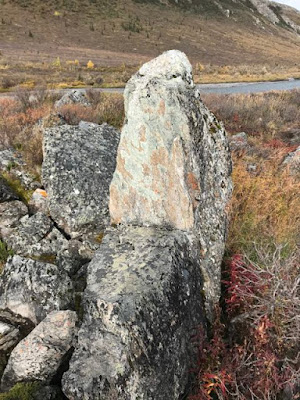[I thought I would just take a few of the ideas from Rosling's book and them apply them to Trump supporters to see why he still has so many. But as I started making the list, I realized that so many of the obstacles to good decisions he mentions are relevant. And because the book has great end of chapter summaries, it's easy to give an outline (though that leaves out most of the examples that help readers understand the points.) So I'm adding this note on top to say, this post will outline those key points I wanted and I'll do a follow up post applying them to our current political situation. As I went through them again, I realized they also illustrate problems among those opposing Trump as well. And I recommend going to the links - particularly to the fact test and to lgapfinder.]
Factfulness:: Ten Reasons We're Wrong About the World - and Why Things Are Better Than You Think by Hans Rosling, starts out with a self test on facts about how the world is doing, which you can take here. The first question is:
1. In all low-income countries across the world today, how many girls finish primary
school? a. 20%
b. 40%
c. 60%
In the book he relates the many different places he's given the test - to college students, business people, bankers, doctors, heads of international organizations, Nobel Prize winners, etc. All the groups, he tells us, scored worse than chimpanzees. (Who randomly choosing one of three options would get 33% right.)
The questions all relate to how human beings are doing around the world. He argues they are doing much better than most people think. And everyone in the West, he argues, think everything is getting worse, because we have mental models of "US" and "THEM" - US being being relatively rich (mostly) Western societies and THEM being the poor starving masses in the rest of the world who will never, ever be able to catch up to how we live in the West.
Reality, he argues, is much different. Rather than US and THEM with a giant unbridgeable gap between the two, he presents us with a different model. One without a gap. Instead, he says there is US which he calls (income) Level 4, then Level 3, Level 2, and finally THEM in Level 1. The gap is filled with five billion people. Levels 1 and 4 have one billion each. So, most people are in that gap most people mistakenly see. In fact, the website he and his co-authors (his son and daughter-in-law) set up to present the data they use to convince people their world views are wrong, is called
Gapminder. (Any one who's ridden a subway in Britain or a relatively recent British colony will hear in their heads the warning "Mind the Gap")
Here's how he describes the levels:
Level 1 - making $1 a day
Five kids, spend hours/day walking barefoot to get water with the single family bucket. They gather firewood for cooking, little or no access to medical care, the same porridge for every meal. (1 billion people)
Level 2 - making $4 a day
Buy food you didn't grow, raise chickens, sandals for kids, bike, more buckets, less time getting water, gas for cooking, kids can go to school instead of finding firewood. Electricity, but not reliable. Mattress to sleep on. (3 billion people)
Level 3 - $16 from multiple jobs. Cold water tap. Stable electricity improves kids' homework. Buys fridge, motorcycle, can travel to better paying job. (2 billion people)
Level 4 - >$33 a day
Rich consumer. >12 years education. You've been on an airplane on vacation. Hot and cold indoor water. Can eat out once a month and buy a car. (1 billion people)
Most of the book talks about why people are so misinformed about facts about the world and how to counteract them. We have a number of built in human instincts that might have been useful to human beings tens of thousands of years ago, but today can get us into trouble. We have to learn to control them.
The Gap Instinct - The tendency to polarize things, to see an unbridgeable gap between rich and poor, them and us. Remember to:
- Beware comparisons of averages
- Beware of comparisons of extremes
- The view from up here - Things are distorted (as the view from Level 4)
The Negativity Instinct - tendency to see and report on the bad things that happen, not the good. Remember:
- Better and bad - things can be getting better and still be bad, it's not either/or
- Good news is not news - doesn't get reported the way bad news does
- Gradual improvement is not news - slowly improving conditions aren't newsworthy
- More news doesn't equal more suffering - often bad news due to better surveillance of suffering, not a worsening. Our news and social media bring us lots of bad news
- Beware of rosy pasts - The good old days are much better in hindsight than we people lived them
The Straight Line Instinct - this is seeing a trend and assuming it will always be that way. Remember to:
- Not assume straight lines - many trends are not straight lines but are curves. We may be only looking at a short part of the line. (He talks about various trends, but about population particularly for this one. He argues that as people improve their wealth and move up to a higher level, they have fewer children and that all the population experts agree that at about 11 billion people the world population will level off.
The Fear Instinct - Frightening things get our attention. Our natural fears of violence, captivity, and contamination make us systematically overestimate these risks. To control the fear instinct, calculate the risks.
- The scary world: fear v reality - the world seems scarier than it is because it has been filtered by your attention filter or by the media precisely because it is scary
- Risk=danger x exposure - The risk is not related to how scary something is, but by a) how dangerous it is and b) how much you're exposed to it
The Size Instinct - Lonely numbers seem impressive (large or small). How to get things into proportion:
- Compare - Single numbers alone are misleading. Look for comparisons (with past numbers, numbers in other locations, etc.)
- 80/20 Rule - Generally, a few things account for most of the impact. Figure out the 20% that's most important
- Divide - Amounts and Rates tell different stories. Comparing countries, say, the numbers are misleading. Look for rates per person instead.
The Generalization Instinct - Categorization is necessary to survive, but categories can be misleading. We have to avoid generalizing incorrectly.
- Look for differences within groups - find ways to break them down into smaller and smaller categories
- Look for similarities across groups - and ask if your categories are correct
- Look for differences across groups - do not assume what applies to one group applies to another (what applies to Level 4, for example, applies to other Levels)
- Beware of "the majority" - Majority just means more than half, there's another 49%
- Beware of vivid examples - Vivid images are easy to recall, but they may not be representative
- Assume people are not idiots - When things seem strange, be curious and humble and think. In what way is this a smart solution?
The Destiny Instinct - Many things (such as people, countries, religion, and cultures) appear to be moving in a constant direction because the change is so slow, but slow changes gradually become big ones.
- Keep track of gradual Improvements - small change every year can become a huge change over decades.
- Update your knowledge - Some knowledge goes out of date quickly. Technology, countries, societies, cultures, and religions are constantly changing.
- Talk to Grandpa - think about your values are different from those of your grandparents
- Collect examples of cultural change - Challenge the idea that today's culture must also have been yesterday's and will be tomorrow's.
The Single Perspective Instinct - A single perspective can limit your imagination, better to look at problems from many angles to get a more accurate understanding.
- Test your ideas - Have people who disagree with you test your ideas
- Limited expertise - Don't claim expertise beyond your field. Be humble about what you don't know.
- Hammers and Nails - From the saying: "If you give a young child a hammer, he will think everything needs pounding." If you get good with a tool don't use it too often. If you have analyzed a problem in depth, you can end up exaggerating its importance. No one tool is good for everything. Be open to ideas from other fields.
- Numbers, but not only numbers - Love numbers for what they tell you about real lives.
- Beware of simple ideas and simple solutions - History is full of visionaries who used simple utopian visions to justify terrible actions. Welcome complications.
The Blame Instinct - He told a story in this chapter about a problem with a pharmaceutical company for not looking for solutions to poor people's diseases. A student of his suggested someone should punch the CEO in the nose. He replied, I will see him next week, but if I did that would it solve the problem? He answers to the board. Should I punch them in the nose too? They answer to shareholders who want profits. Should I go after the shareholders? Retirement funds hold lots of pharmaceutical stocks that help pay pensions for old folks. When you see your grandfather next week, maybe you should punch him in the nose. The desire to find a scapegoat is universal, but things are more complicated.
- Look for causes, not villains - spend your energy on understanding the multiple interacting causes, or system, that created the situation.
- Look for systems, not heroes. When someone claims to have caused something good, ask whether the outcome might have happened anyway, even if that individual had done nothing. Give the systems the credit.
The Urgency Instinct - When often rush decisions because of a perceived, but not necessarily true, urgency. Control this by taking small steps.
- Take a breath - When your urgency instinct is triggered, your other instincts kick in and your analysis shuts down. Ask for more time and information. It's rarely now or never and rarely either/or.
- Insist on the data - If something is urgent and important, it should be measured. Beware of relevant but inaccurate data
- Beware of fortune tellers - Any prediction about the future is uncertain. Beware of of predictions that fail to acknowledge that. Ask how often such predictions have been right before.
- Be wary of drastic action - Ask what the side effects will be. Ask how the idea has been tested. Step-by-step practical improvements are less dramatic but usually more effective.
I'll put a link to Part II here when it's ready, but I'm guessing that readers can start applying these instincts to both Trump supporters and opponents.























